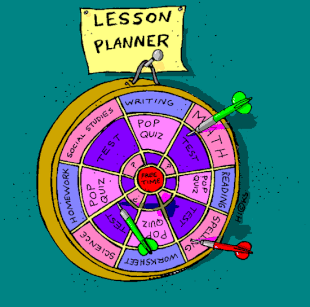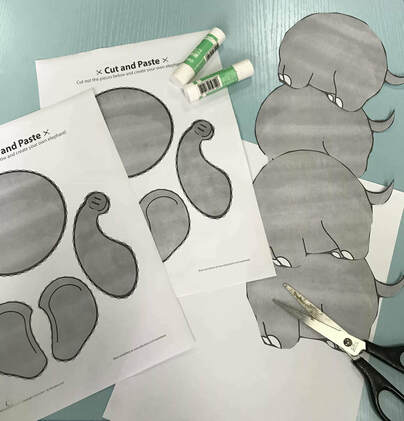You see, even as long as I've been teaching in China, I still have lessons I need to learn as well. I know for certain that this wasn't the first lesson I've encountered in my teaching career and it also surely won't be the last. It's learning from these lessons, however, that allow us to improve and be the best that we can be. Let me first clarify one thing. I haven't been a teacher these past 9 years without lesson planning. I do it all the time, all teachers do (or at least should). For me personally, it's more about creating a sense of structure; having it written down on paper helps make it clearer in my head as well. What I didn't really put much thought into though was exactly how much detail one must put into a plan to ensure an effective and workable lesson aimed at pre-school kids. I'd always thought to myself "Some cute, little 2-3 year olds? How hard can it be to create fun and engaging activities???" How wrong I was... The headless elephant in the room
That's not to say that I don't like the job; the kids are a veritable joy to be around. It just means that I face a plethora of new lessons on an almost daily basis. My most recent lesson here centers around elephants. As simple as 'CTRL+X' and 'CTRL+V'The evening before my amazing 'Cut and Paste Elephant' class (not my idea by the way but something I got from a very, VERY handy website called www.education.com). A pretty simple lesson; the children had to first cut out the individual elephant parts before then gluing them onto a piece of paper, ideally so that they resembled an actual elephant and not something from the deep, dark abyss. I was excited by the prospects of the following day and the fun that would be had by all... ...until I got there... ...and jumped straight in at the deep end, expecting them to cut around noses and tails, as opposed to cutting them off entirely (which I think one kid almost accomplished within seconds of receiving his child safety scissors). It was amid all this craziness that I said to myself "Probably should have checked they could cut first eh?". What ensued was a good 30 minutes of trying to teach them how to hold scissors and then get them to practice cutting up scraps of paper first. Time was running out however with snack time rearing its tasty, apple shaped head. So like any teacher would have done in this situation... I ended up sitting in the corner, cutting up and preparing all the elephant pieces whilst they chowed on apple slices. Not my finest hour but it did lead to a much smoother second half of class. To my delight they were professionals when it came to the art of the glue stick. We managed to attach all the pieces together with minimum help from the assistants and had a collection of 4 very fine looking elephants in no time flat. The children were delighted with the end results and, likewise, so was I. The moral of the storyLesson plan, lesson plan, lesson plan. With an age group as young as the one I currently teach I've got to constantly ask myself 'Can they do this?', 'What things could possibly go wrong when they attempt this?', 'What do I do if things go wrong after they've failed in their attempt at this?'. When I plan my classes I need to look at every step and gauge how difficult I think it will be for them to accomplish. If it's likely too difficult then I need to include a set of simpler steps in my plan before we jump straight in. I also need to adapt to the different needs and personalities of my students; some are more capable than others, some lose focus easier. It's not just planning what you will teach that counts but also how you will teach it. Lesson planning isn't necessarily just planning separate blocks, or classes. Certain skills need to be slowly taught over the course of a few days or weeks. I'm sure my kids could manage the cutting elements of this class if I'd just provided the opportunity to learn how through a series of simple yet increasingly difficult classes. These ideas are not just limited to pre-school children either, the same can be said for students of all ages. The act of cutting scissors for a 2 year old and the act of preparing a speech in English for a 15 year old are identical in that they must progress slowly in well laid out steps and over the course of well planned out classes. Only then can they be successful and only then can you be successful through their success. TL;DRA well designed plan is your lifeline in the classroom. Don't ever take it for granted, no matter how experienced you are. Now have a look at some wonderfully designed elephants: |
AuthorsOur wonderful edcentric team, both staff and interns, come together to create blog posts on all things China, to better provide an insight into life in this fascinating country. Categories |
|
© COPYRIGHT 2019. ALL RIGHTS RESERVED
Partnering with YSE to bring you amazing China experiences |
Attributions:
"Icons on TEFL Level 5 Courses made by FreePik from www.freepik.com"
All TEFL Courses have been developed in conjunction with Gatehouse Awards and i-to-i
"Icons on TEFL Level 5 Courses made by FreePik from www.freepik.com"
All TEFL Courses have been developed in conjunction with Gatehouse Awards and i-to-i





